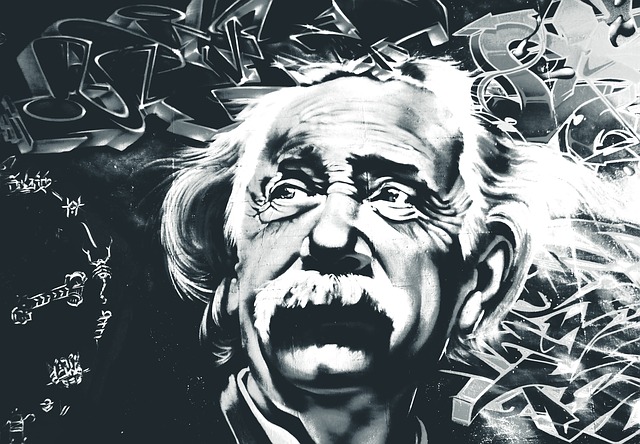
“Energy can neither be created nor destroyed; rather, it transforms from one form to another.” ~ Albert Einstein
~
We need to stop striving for closure.
I don’t believe in closure. I believe in transitions.
Our lives are just a series of relationships—ebbing and flowing, shifting and changing, coming together and separating. All of our relationships, whether they are with our parents, lovers, children, friends, body, environment, higher power, are simply energy.
So, based on Einstein’s theory of energy, there is no such thing as the end or death of a relationship. There is only a shift in the nature or energy of the relationship.
When I am teaching yoga, I often remind the students of this theory of energy and our relationship to the asanas. That how we do some things is how we do everything. That our practice on the mat is not separate to our practice off the mat.
The asana never ends; there is no final destination. The practice is in the transitions, in the breath—how we transition from one asana to the next, from one relationship to the next. That is our practice.
The advanced practitioner is not the yogi that can tie themselves up into the most interesting shapes and forms or stand on their pinky fingers while in a Lotus handstand. The advanced practitioner is the yogi who moves through space and through life, transitioning from one relationship to the next, with the highest level of consciousness, awareness, grace, and love.
The practice never ends—even in our final moments here on Earth when we are practicing the greatest of all transitions. If you subscribe to reincarnation, you know that we can bring karmas with us from different lifetimes.
So if there is no such thing as the end of a relationship, how do we transition out of the ones that no longer fall into alignment with where we are going and our highest potential?
How can we give those relationships less energy, focus, and power in our lives?
I was first introduced to the concepts of “affectionate detachment” by one of my teachers and dear friend, Steve Ross.
Affectionate detachment, or loving detachment ultimately describes God’s love for us, and the true love to which we aspire. The detachment part may sound negative, like not really caring, but that’s not what it means. The ultimate practice of affectionate detachment is love without any expectations, needs, or fears.
Usually, our love comes with an expectation of something in return, but ultimately affectionate detachment is unconditional love, with no expectation or desire for anything in return. Very few of us will fully realize this form of affectionate detachment in this lifetime. I think that we have experiences that come close to this in our daily lives, like the love for our child, our spouse, parents, and even our pets.
But those are the easier relationships. How do we practice affectionate detachment when we don’t even like the person?
Practicing affectionate detachment helps us stay when things get uncomfortable and energies are out of balance.
During these periods, it always helps me to remember that everyone is doing the best that they can in any given moment with where they are on their own path of consciousness. We have to trust in the good in everyone, that they have good intentions—even if sometimes it doesn’t seem that way.
What do we do with the relationships that have lost any sense of affection and don’t even come close to feeling like love anymore?
Very often in romantic relationships, we find ourselves growing apart and wondering what happened, wondering where the the love went. These relationships are often delicate and entangled and have so many other factors involved. It’s often worth it to stay in that uncomfortableness a bit longer and do some work, granted that the other party is willing to do the work, too.
If we want to feel unconditional love, we must be willing to give unconditional love.
In longterm relationships, whether it is a romantic partner, family member, friend, or even business colleague, we have a tendency to take one another for granted, and habits that don’t fall into alignment with our highest and best selves sneak in. Often, all that is needed is a “check in” or, as my mom would say, “a come-to-Jesus meeting” in order to reestablish the core values of respect and love back into the relationship.
Try opening up the lines of communication to let the other party know how you are feeling. For whatever reason, they may not even be aware of how you are feeling or how others might be interpreting their actions. If afterward they continue to be an energy sucker rather than a collaborator and you decide to stay, you do so from a place of full knowing and disclosure.
How do we know when it’s the right time to transition into a different state of being in a relationship?
Some signs that there is an imbalance are feeling overwhelmed, stressed, physically ill or achy, mentally or physically exhausted, or being irritable and anxious. When these signs show up, affectionate detachment may be in order.
A good test is to ask yourself if you would feel better if you stopped the interaction. Notice how your body responds when you physically leave the situation. If you instantly feel lighter, happier, or even a greater sense of freedom, it may be time to consider practicing affectionate detachment. Remember that it may only need to be a temporary period of time—change is the only thing in this world that is certain, and the practice is in the transitions.
Don’t get me wrong: We have to protect ourselves from being abused or drained. Remember, just because we can tolerate something doesn’t mean we should, and yet at the same time, we must also take the bigger picture into consideration. We can give ourselves permission to return once mutual awareness, wisdom, and understanding are established.
How do we gracefully walk away in a loving manner and begin practicing affectionate detachment when the other person is not on board and becomes manipulative, angry, or acts out?
Even when we have taken the proverbial high road, there will inevitably be times in our lives when we will feel attacked, ridiculed, or judged. Being able to place an energetic shield around ourselves is a form of affectionate detachment that we must all acquire if we are going to be able to function in this highly social and competitive world. And yes, even in the yoga world, this skill is needed.
In fact, in yoga it can be even trickier to navigate, as it’s packaged in spirituality and people hide behind the yoga facade. Being able to detect and sense the users from the collaborators, the crazy makers from the peace makers, and the energy suckers from those that inspire takes time, experience, and consistent practice. We must be diligent and committed.
The better we become at the art of affectionate detachment, the better we will be at avoiding sticky entanglements from the get go. And when we do choose to participate, it protects us from becoming depleted and prevents disease from settling into our bodies.
When cultivating this practice, trust your intuition and gut. You will develop a keen perception on people’s intentions and desire to connect.
Sometimes, I give people the benefit of the doubt to my own detriment. I am all for believing the best in people, but giving people third and even fourth chance while expecting a different outcome is the definition of insanity.
Practicing affectionate detachment can be a powerful tool as we navigate through our relationships. It helps keep us in healthy alignment in mind, body, and spirit and on task with regard to moving toward our highest potential and consciousness in this lifetime.
The quality of our relationships becomes richer, and by extension, so does our quality of life.
~
~
Author: Tymi Howard
Image: Pixabay
Editor: Callie Rushton








Read 0 comments and reply